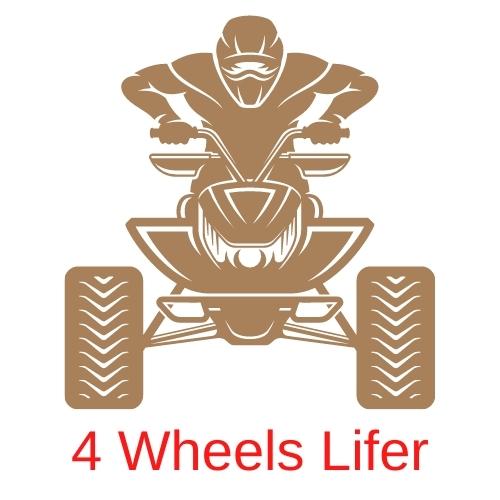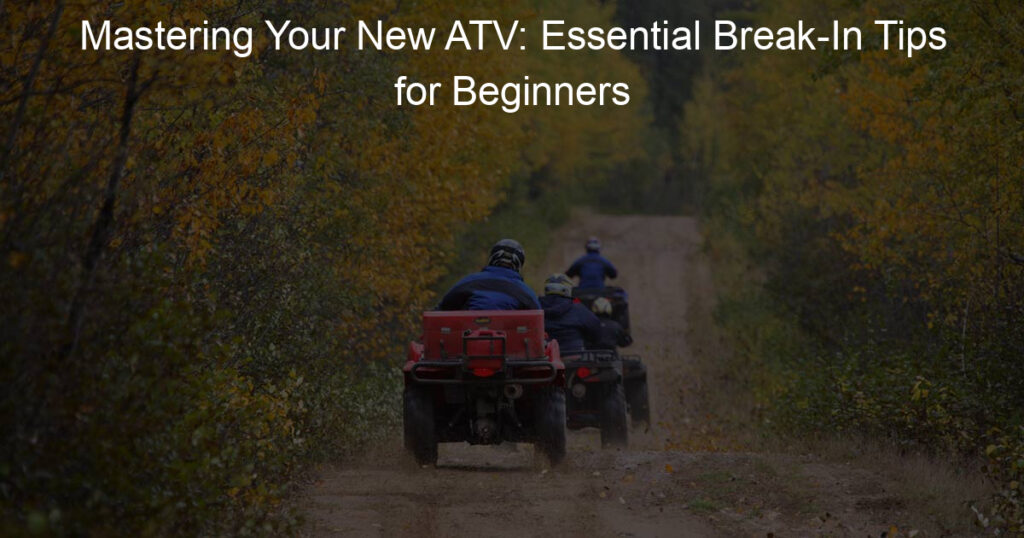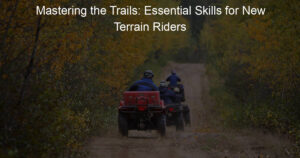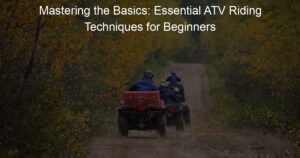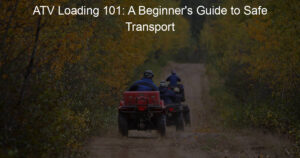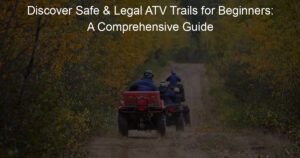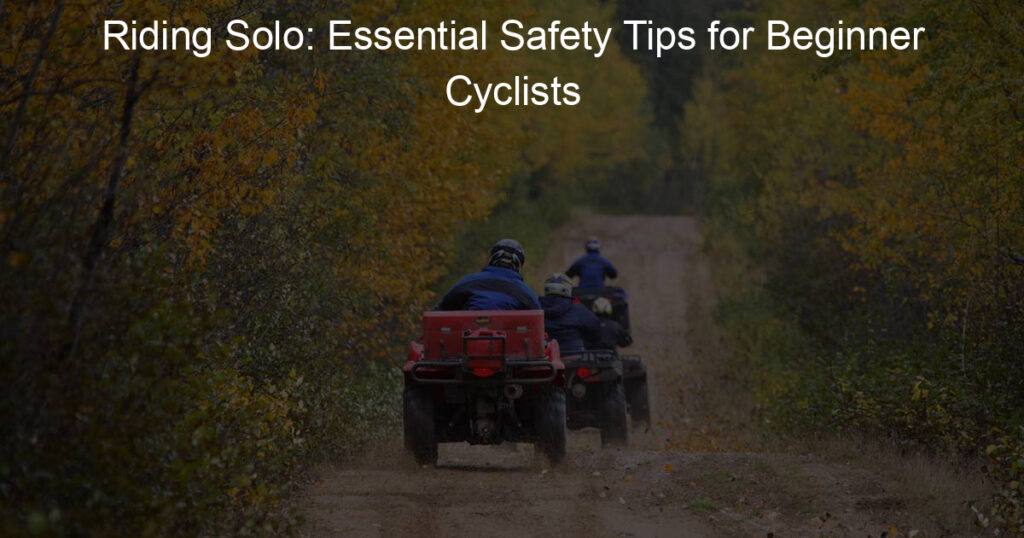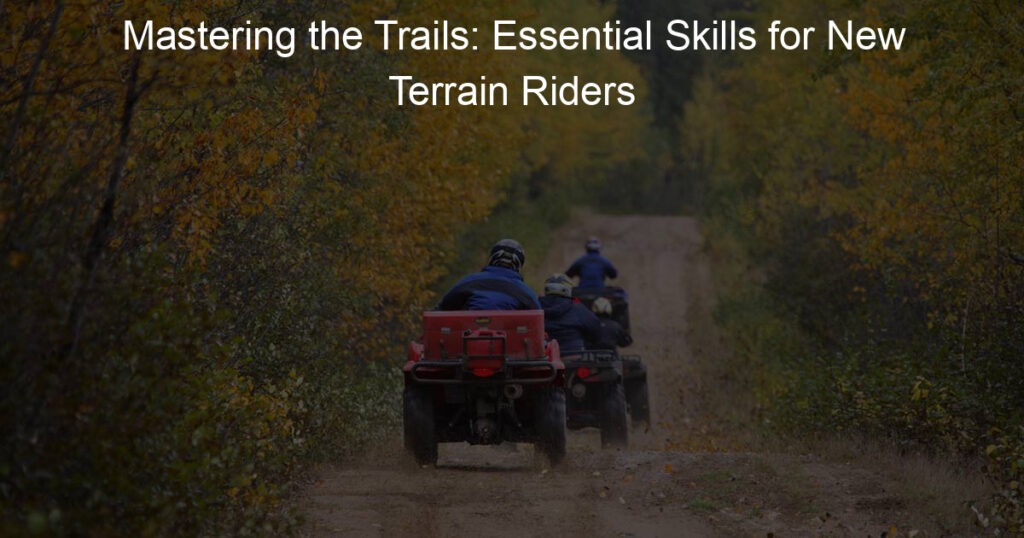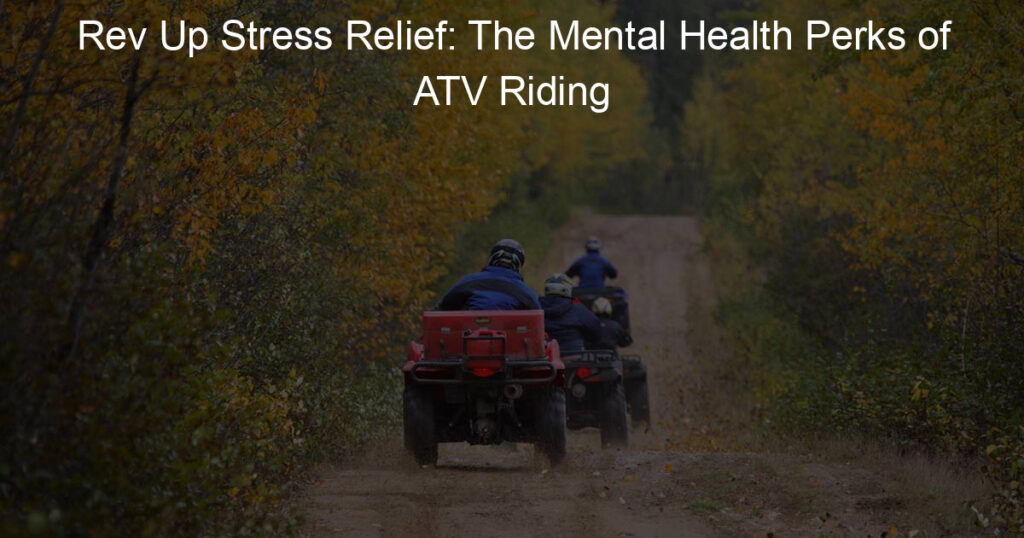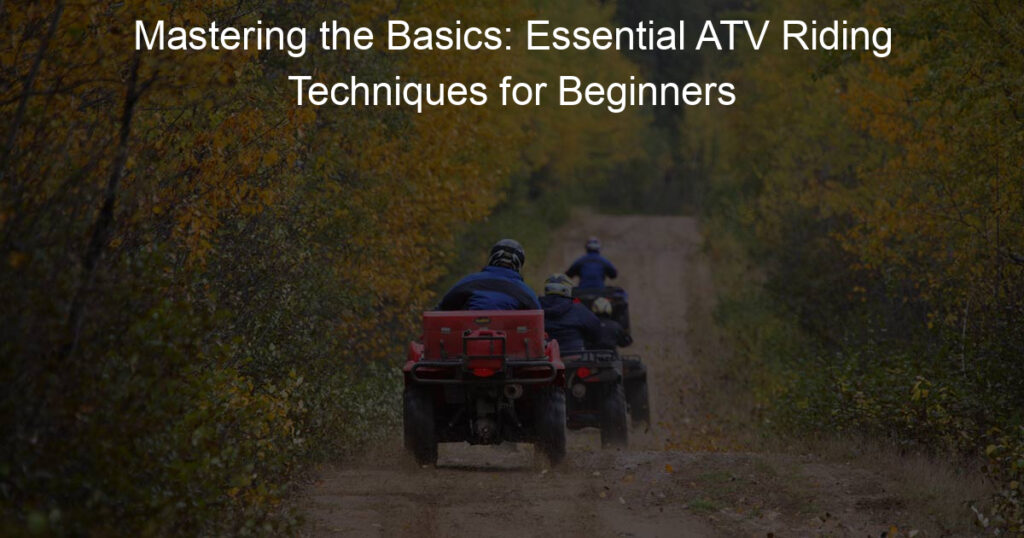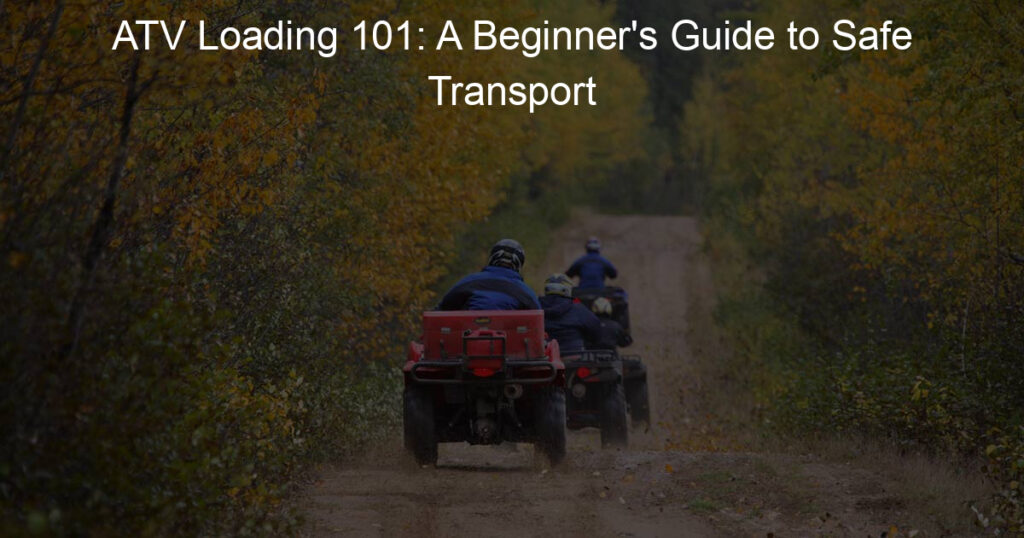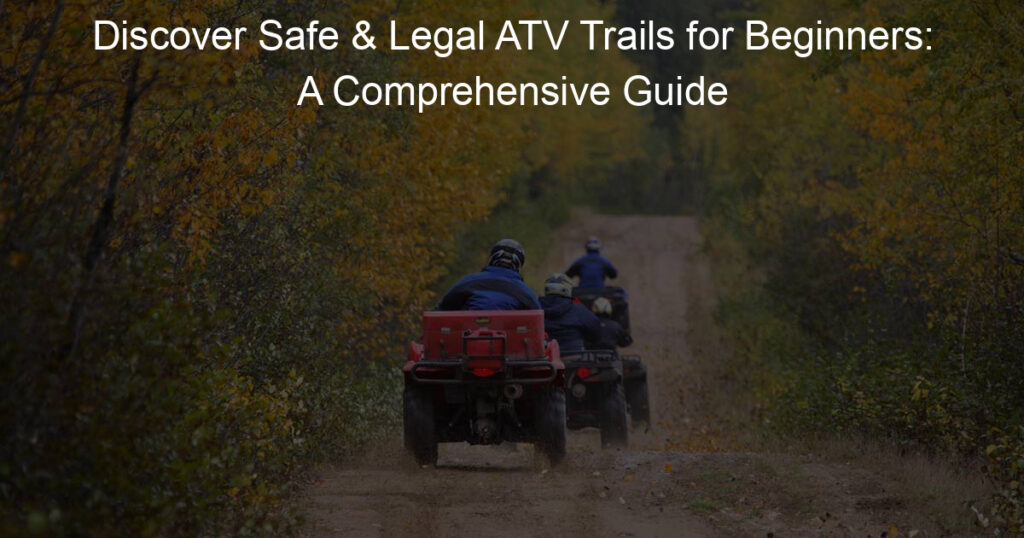
Introduction to ATV Ownership
Welcome to the exciting world of ATV ownership! As a new owner, you’re about to embark on a thrilling journey filled with adventure and fun. However, owning an ATV also comes with certain responsibilities. Let’s delve into these responsibilities and understand the importance of proper ATV maintenance.
- Understanding the responsibilities of being a new ATV owner
- Importance of proper ATV maintenance
Being a new ATV owner is not just about the thrill of riding. It’s also about understanding and accepting the responsibilities that come with it. You are responsible for your safety and the safety of others while operating your ATV. This means adhering to all safety guidelines, wearing appropriate gear, and riding within your skill level. Additionally, you are also responsible for the upkeep and maintenance of your ATV. Regular maintenance not only ensures your ATV runs smoothly but also extends its lifespan.
Maintenance is a crucial part of ATV ownership. A well-maintained ATV performs better, lasts longer, and is safer to ride. Regular maintenance includes checking and changing the oil, inspecting and replacing air filters, checking tire pressure, and ensuring the brakes are in good working condition. Ignoring these tasks can lead to poor performance and potential safety risks. Remember, a well-maintained ATV is a well-performing ATV.
In conclusion, being an ATV owner is a commitment. It involves understanding the responsibilities that come with it and the importance of regular maintenance. With the right approach, you can ensure your ATV provides you with years of fun and adventure.
ATV Maintenance Tips for Beginners
Keeping your ATV in top shape is crucial for both your safety and the longevity of your vehicle. Here are some maintenance tips that every beginner should know before they hit the trails.
Pre-Ride Checks
Before you start your ATV, it’s essential to perform a few checks. These checks ensure that your ride is safe and smooth. Let’s take a look at them.
- Checking tire pressure
- Inspecting brakes and levers
- Examining the oil and coolant levels
Proper tire pressure is crucial for the best performance and safety of your ATV. Check the tire pressure using a reliable tire pressure gauge. The recommended tire pressure for ATVs is usually between 2 and 10 PSI, but always refer to your owner’s manual for the exact figures.
Brakes are your primary safety feature. Check the brake levers for any signs of damage or excessive wear. Also, ensure that the brakes respond well when applied. If the brakes feel spongy or if the levers are loose, it’s time to get them checked by a professional.
Oil and coolant levels are vital for the smooth running of your ATV. The oil should be at the correct level and clean. If it’s dark or dirty, it’s time for an oil change. The coolant level should also be within the recommended range. Low coolant levels can lead to overheating, which can severely damage your ATV’s engine.
Remember, a well-maintained ATV not only provides a better riding experience but also lasts longer. So, make these pre-ride checks a part of your routine every time you plan to ride your ATV.
Post-Ride Maintenance
Once you’ve had a fun day out on the trails with your ATV, it’s important to take the time to perform some post-ride maintenance. This will ensure that your ATV stays in top shape and is ready for your next adventure. Let’s look at the three key steps you should take after each ride.
- Cleaning your ATV
- Checking for any damages
- Proper storage of your ATV
It’s crucial to clean your ATV after every ride. Dirt, mud, and debris can build up and cause damage to your vehicle over time. Use a hose to wash off any dirt and grime, and make sure to clean hard-to-reach areas like the undercarriage and wheel wells. A clean ATV not only looks great, but it also runs better and lasts longer!
After cleaning your ATV, it’s time to check for any damages. Look for any signs of wear and tear, such as cracks in the tires, loose bolts, or leaks. If you find any issues, it’s best to address them right away to prevent further damage. Remember, a well-maintained ATV is a safe ATV.
Finally, you should store your ATV properly to protect it from the elements. If possible, keep it in a garage or shed. If you don’t have indoor storage, consider using a weather-resistant cover. Also, remember to disconnect the battery if you won’t be using your ATV for a while. Proper storage can significantly extend the life of your ATV.
In conclusion, post-ride maintenance is just as important as pre-ride checks. By cleaning your ATV, checking for damages, and storing it properly, you can ensure that your ATV is always ready for your next adventure. Happy riding!
Breaking in a New ATV: A Comprehensive Guide
When you purchase a new All-Terrain Vehicle (ATV), it’s essential to understand the break-in period. This initial phase of ATV ownership is crucial for the longevity and performance of your vehicle.
Understanding the Break-In Period
The break-in period is a critical phase in the life of your ATV. Let’s dive deeper into what it is and why it’s so important.
- What is the ATV break-in period?
- Why is the break-in period important?
The break-in period refers to the initial hours of operation after purchasing a new ATV. During this time, the engine and other mechanical components adjust to being used. This period typically lasts for the first 10 to 20 hours of operation, or as specified by the manufacturer.
The break-in period is important because it allows the engine and other parts of the ATV to settle in and adapt to functioning together. This period helps to ensure that all components work smoothly and efficiently, reducing the risk of damage or premature wear and tear. Properly breaking in your ATV can lead to better performance, increased longevity, and fewer maintenance issues down the line.
In conclusion, understanding and properly managing the break-in period of your new ATV is a crucial step towards ensuring its optimal performance and longevity. Remember, a well-maintained ATV is a long-lasting ATV!
Steps to Break in a New ATV
-
Reading the owner’s manual
Before you start your ATV for the first time, it’s essential to read the owner’s manual. This book is like a guide to your new vehicle. It contains vital information about the ATV’s features, safety precautions, and maintenance tips. Understanding these details will ensure you use your ATV correctly and safely.
-
Initial startup and idle
After reading the manual, it’s time for the initial startup. Turn on the ATV and let it idle for a few minutes. This process allows the engine oil to circulate and lubricate the internal parts of the engine. Remember, don’t rev the engine during this period. Let it run at a slow and steady pace.
-
First ride and heat cycles
Now, you’re ready for your first ride. But remember, this isn’t a race. The goal is to complete a few heat cycles. A heat cycle involves starting the engine, letting it reach its operating temperature, and then allowing it to cool down. This process helps the engine parts to settle in and function smoothly. It’s recommended to do at least 5-7 heat cycles for a new ATV.
-
Post break-in maintenance
After the break-in period, it’s time for some maintenance. Check the oil and replace it if necessary. Also, inspect the air filter, brakes, and tires. Make sure everything is in good condition. This post break-in maintenance is crucial to ensure your ATV’s longevity and optimal performance.
ATV Care for Beginners: Do’s and Don’ts
When it comes to caring for your ATV, there are certain do’s and don’ts that every beginner should know. These guidelines will help you maintain your ATV in top condition and ensure its longevity. Let’s dive into the details.
- Do’s of ATV care
- Regular Maintenance: Just like a car, your ATV needs regular maintenance. This includes oil changes, tire checks, and brake inspections. Regular maintenance can prevent major problems down the line.
- Proper Storage: When not in use, store your ATV in a dry and cool place. This can prevent rust and other damage caused by harsh weather conditions.
- Use the Right Fuel: Always use the recommended type of fuel for your ATV. Using the wrong type can damage the engine and reduce performance.
- Wash After Use: Dirt and mud can damage your ATV over time. Always wash your ATV after use, especially if you’ve been riding in muddy conditions.
- Don’ts of ATV care
- Ignoring Warning Signs: If your ATV is making strange noises or not performing as it should, don’t ignore these warning signs. Get your ATV checked out by a professional as soon as possible.
- Overloading: Never exceed the weight limit of your ATV. Overloading can damage the suspension and other components of your ATV.
- Skipping Maintenance: Never skip regular maintenance. Even if your ATV seems to be running fine, regular check-ups can catch potential issues before they become major problems.
- Using the Wrong Cleaning Products: Not all cleaning products are safe for your ATV. Always use cleaning products that are specifically designed for ATVs to avoid causing damage.
Here are some of the key things you should do to take care of your ATV:
Here are some things you should avoid doing to keep your ATV in good condition:
By following these do’s and don’ts, you can keep your ATV running smoothly for years to come. Remember, proper care and maintenance is the key to enjoying your ATV journey.
First Time ATV Owner Tips
If you’re a first-time ATV owner, congratulations! Owning an ATV can be a thrilling experience, but it’s important to remember that safety should always be your top priority. Here are some safety tips to keep in mind.
Safety Tips
When it comes to ATV safety, there are two key areas to focus on: wearing appropriate gear and understanding and respecting the ATV’s power.
- Wearing Appropriate Gear
- Understanding and Respecting the ATV’s Power
Just like you wouldn’t ride a bicycle without a helmet, you shouldn’t ride an ATV without the proper gear. This includes a helmet, goggles, long sleeves, long pants, over-the-ankle boots, and gloves. This gear will protect you from potential injuries and the elements.
ATVs are powerful machines. They can reach high speeds and navigate difficult terrain. It’s important to understand and respect this power. Always ride at a speed that’s appropriate for the conditions and your skill level. And remember, ATVs are not toys. They should be treated with the same respect as any other vehicle.
By following these safety tips, you can enjoy your ATV while minimizing the risk of accidents or injuries. Remember, safety should always be your number one priority when riding an ATV.
Training and Practice
Learning to ride an ATV is a fun and exciting adventure. But, it’s also a serious task that requires proper training and practice. Let’s dive into why these two aspects are so important.
- Importance of ATV Training Courses
ATV training courses are a crucial part of becoming a responsible and safe ATV rider. They teach you the basics of operating an ATV, including how to steer, brake, and balance. They also cover important safety information, like what gear to wear and how to handle different terrains.
Did you know that according to a study by the U.S. Consumer Product Safety Commission, 92% of all ATV accidents are due to riders who have not been trained properly? This shows just how important training courses are.
- Practicing in a Controlled Environment
Once you’ve completed your training course, it’s time to practice. And the best place to do that is in a controlled environment. This could be a designated ATV track or a large, open field. Practicing in a controlled environment allows you to get comfortable with your ATV without the risks of unpredictable terrain or other riders.
Remember, practice makes perfect. The more time you spend practicing, the more confident and skilled you’ll become. As the old saying goes, “The more you sweat in practice, the less you bleed in battle.”
In conclusion, training and practice are key components of becoming a skilled and safe ATV rider. So, make sure to take your training course seriously and spend plenty of time practicing in a controlled environment. Happy riding!
Conclusion: Enjoying Your ATV Journey
As we wrap up our guide for new ATV owners, it’s important to remember that owning an ATV is not just about maintenance and care. It’s about the journey, the adventure, and the community. Here are some final thoughts on how to fully enjoy your ATV journey.
- Embracing the learning process
- Joining ATV communities
- Exploring and adventuring with your ATV
Learning is a significant part of any new experience, and ATV ownership is no exception. From understanding the mechanics of your ATV to mastering the art of safe riding, there’s always something new to learn. Don’t be discouraged by the challenges you might face. Instead, see them as opportunities to grow and become a better ATV rider. Remember, every expert was once a beginner.
ATV communities, both online and offline, are great places to share experiences, learn from others, and make new friends. These communities often organize group rides and events, providing you with opportunities to explore new trails and landscapes. Joining an ATV community can enrich your ATV journey, making it more enjoyable and fulfilling.
Your ATV is your ticket to adventure. It can take you to places that are inaccessible by foot or regular vehicles. Whether you’re exploring a local trail or embarking on a cross-country journey, every ride is a new adventure. So, strap on your helmet, fire up your ATV, and let the adventure begin!
In conclusion, owning an ATV is a journey filled with learning, community, and adventure. Embrace the learning process, join ATV communities, and never stop exploring. Remember, the real joy of ATV ownership lies not in the destination, but in the journey.
